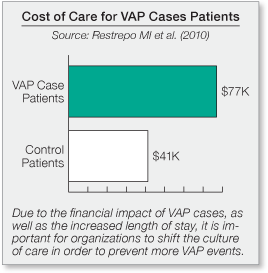
Research
Reducing Incidence of Ventilator-Associated Pneumonia Through Rounding
A core tenet of high-quality care is the prevention of hospital-acquired conditions. These conditions—including CAUTI, CLABSI, pressure ulcers, and others—can dramatically increase length of stay and care costs, making them a high priority for hospital leaders. One such hospital-acquired condition that many organizations are working to eliminate is ventilator-associated pneumonia (VAP). VAP can be caused by such factors as poor hygiene and lack of movement while the patient is intubated.
One 350-bed medical center in California instituted changes to the way in which ventilated patients are managed and monitored, resulting in the elimination of VAP for a significant period of time, from an infection rate of 0.74 infections per 1,000 ventilation days in 2012 to 0 in 2014. In order to learn more about the processes driving this success, The Academy spoke with three RNs and infection preventionists from the organization.
Collaborative Standardization
A key factor in the hospital's successful prevention of VAP was redesign
